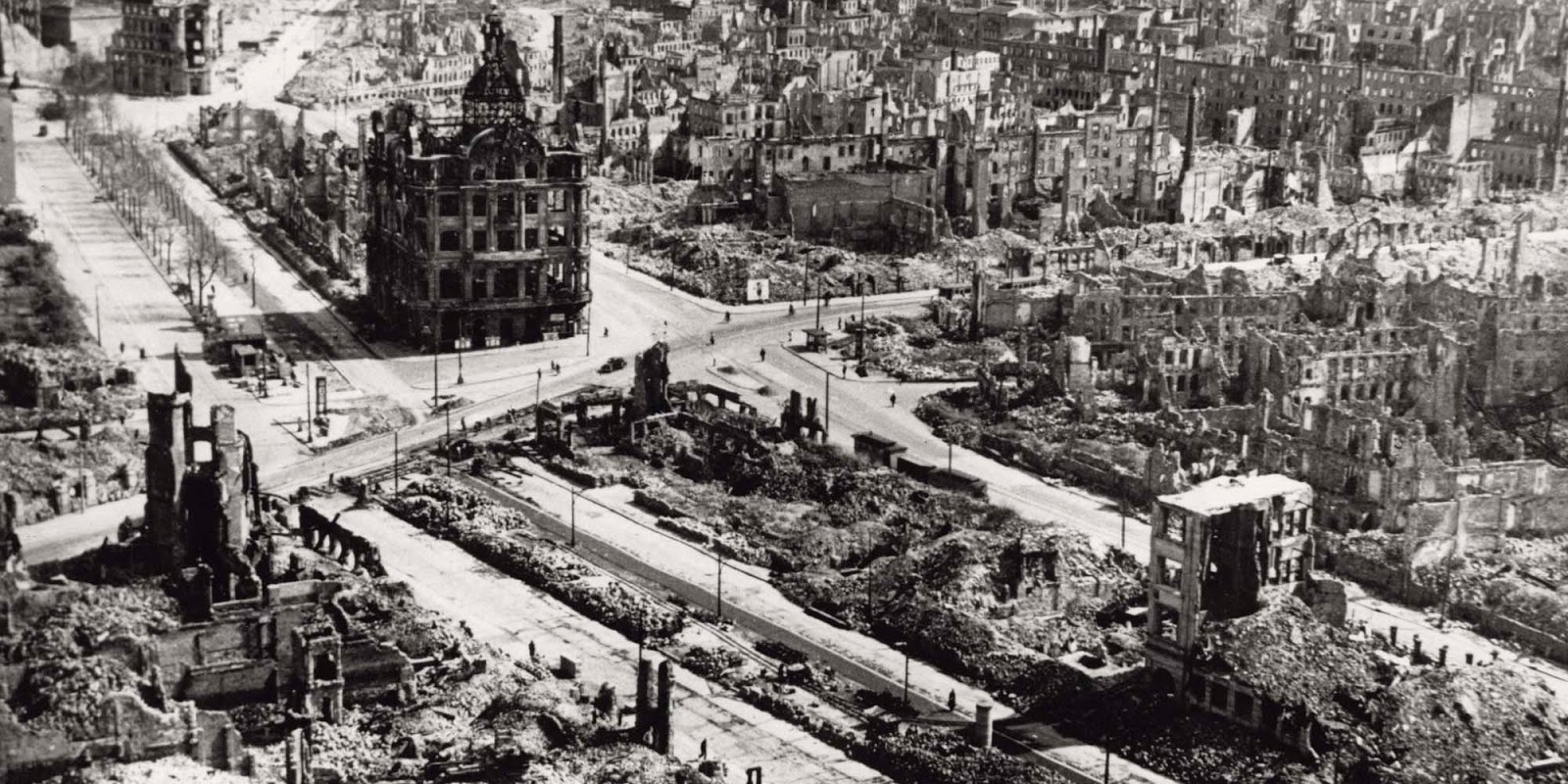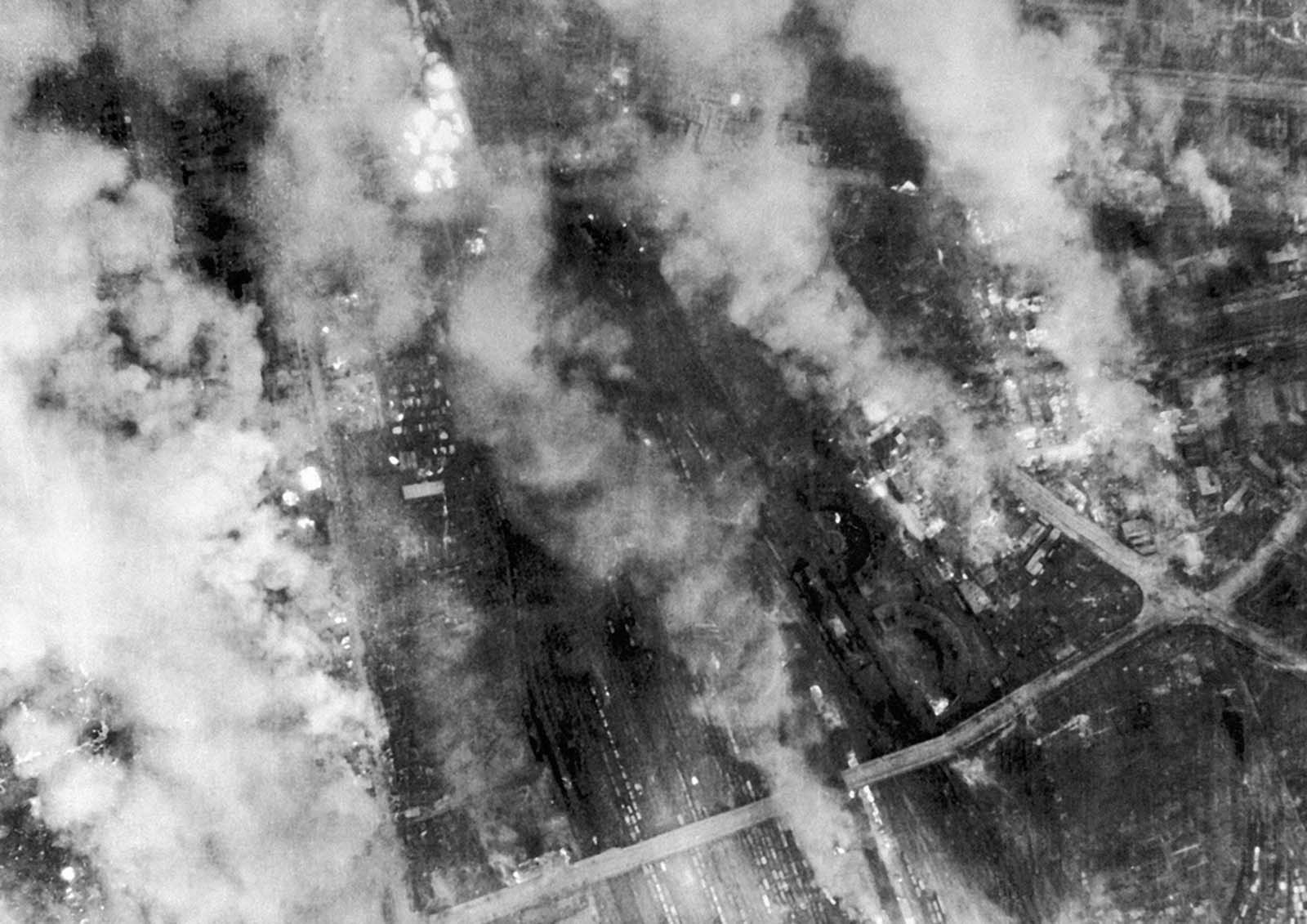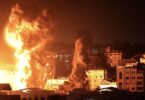Thursday 13th February 2020 marked 75 years since the beginning of one of the 20th century’s worst war crimes. On that day in 1945, Great Britain’s prime minister Winston Churchill and the USA’s president Franklin Roosevelt gave the order for the unprecedented terror bombing of the historic German civilian city of Dresden.
The bombings continued for several days and utilized phosphorous bombs along with conventional bombs, creating firestorms that incinerated everything in their path and killed hundreds of thousands of innocent women, children, and elderly.
This horrific war crime, together with many other atrocities committed by the Allies, has been hushed up and trivialized by the entire Western world to this day in order to keep the focus of blame on the Germanic people for the mythical so-called “holocaust” of Europe’s Jews.
…
Just as we will not forgive or forget the Zionist-controlled nations’ crimes against the people of Dresden in 1945, we will not forgive or forget the Cultural Marxist defamation of those who loyally and unselfishly fight for the Nordic people’s future today.
Nordic Resistance Movement https://nordicresistancemovement.org/nest-8-honour-the-victims-of-dresden/

By February 13, 1945, Germany had all but lost the war. Hitler was in hiding, yet British and American troops burned the militarily insignificant civilian town of Dresden to the ground — and claimed the lives of approximately 25,000 innocent people with it.
On the night of February 13, 1945, hundreds of RAF bombers descended on Dresden in two waves, dropping their lethal cargo indiscriminately over the city. The city’s air defenses were so weak that only six Lancaster bombers were shot down. By the morning, some 800 British bombers had dropped more than 1,400 tons of high-explosive bombs and more than 1,100 tons of incendiaries on Dresden, creating a great firestorm that destroyed most of the city and killed numerous civilians.
Later that day, as survivors made their way out of the smoldering city, more than 300 U.S. bombers began bombing Dresden’s railways, bridges and transportation facilities, killing thousands more. On February 15, another 200 U.S. bombers continued their assault on the city’s infrastructure. All told, the bombers of the U.S. Eighth Air Force dropped more than 950 tons of high-explosive bombs and more than 290 tons of incendiaries on Dresden. Later, the Eighth Air Force would drop 2,800 more tons of bombs on Dresden in three other attacks before the war’s end.
After the war, investigators from various countries, and with varying political motives, calculated the number of civilians killed to be as little as 8,000 to more than 200,000. Estimates today range from 35,000 to 135,000. Looking at photographs of Dresden after the attack, in which the few buildings still standing are completely gutted, it seems improbable that only 35,000 of the million or so people in Dresden at the time were killed.
At the end of the war, Dresden was so badly damaged that the city was basically leveled. A handful of historic buildings–the Zwinger Palace, the Dresden State Opera House and several fine churches–were carefully reconstructed out of the rubble, but the rest of the city was rebuilt with plain modern buildings. American author Kurt Vonnegut (1922-2007), who was a prisoner of war in Dresden during the Allied attack and tackled the controversial event in his book “Slaughterhouse-Five,” said of postwar Dresden:
“It looked a lot like Dayton, Ohio, more open spaces than Dayton has. There must be tons of human bone meal in the ground”.
American author Kurt Vonnegut (1922-2007) “Slaughterhouse-Five”

Dresden bombing survivor Lothar Metzger, recalled the event this way:
“We saw terrible things: cremated adults shrunk to the size of small children, pieces of arms and legs, dead people, whole families burnt to death, burning people ran to and fro, burnt coaches filled with civilian refugees, dead rescuers and soldiers, many were calling and looking for their children and families, and fire everywhere, everywhere fire, and all the time the hot wind of the firestorm threw people back into the burning houses they were trying to escape from. I cannot forget these terrible details. I can never forget them.”
Dresden bombing survivor Lothar Metzger
Metzger was just ten years old at the time.
As the incendiaries fell, the phosphorus clung to the bodies of those below, turning them into human torches. The screaming of those who were being burned alive was added to the cries of those not yet hit. There was no need for flares to lead the second wave of bombers to their target, as the whole city had become a gigantic torch. It must have been visible to the pilots from a hundred miles away. Dresden had no defences, no anti-aircraft guns, no searchlights, nothing.
Victor Gregg
Interesting fact:
- Of 28,410 houses in central Dresden, 24,866 were destroyed. 15 sq km totally demolished — of which there were: 14,000 homes, 72 schools, 22 hospitals, 19 churches, 5 theaters, 50 banks, 31 dept stores, 31 hotels, 62 administrative buildings.
Even allowing for the unique circumstances of Dresden, a figure of 250,000 dead would have meant that 20% to 30% of the population was killed, a figure so grossly out of proportion to other comparable attacks as to have raised the eyebrows of anyone familiar with the statistics of bombing raids…even if the population had been inflated by an influx of refugees fleeing the advance of the Red Army.”[5]
Evans, Richard J., Lying About Hitler: History, Holocaust, and the David Irving Trial, New York: Basic Books, 2001, p. 158.
The destruction from the Dresden bombings was so massive that exact figures of deaths will never be obtainable. However, the statement from the Dresden Commission of Historians that “definitely no more than 25,000” died in the Dresden bombings is clearly inaccurate. An objective analysis of the evidence indicates that almost certainly far more than 25,000 people died from the bombings of Dresden. Based on a comparison to the Pforzheim bombing and the other available evidence, a death toll in Dresden of 250,000 people is easily possible.







